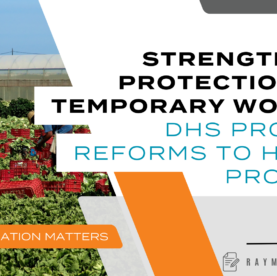Understanding the Different Categories of Immigrant Visas
With over 100 visa types available to those looking to enter the United States on a permanent basis, it’s no wonder the immigration process can be extremely confusing for even the most knowledgeable prospective visa holders. Fortunately, a basic understanding of the different immigrant visas available can be gained from dividing the different types into more manageable categories. While other types of immigrant visas exist, the two primary categories are family-sponsored visas and employer-sponsored visas.
FAMILY-SPONSORED VISAS
Visas for immediate family members are among the most common approved by the U.S. Department of State or U.S. Citizenship and Immigration Services. Depending on the family relationship, prospective visa recipients may have their requests honored in different orders of priority. Immediate relatives of U.S. citizens, for example, are often eligible for having their applications processed and visas issued immediately. This category includes spouses, unmarried children under 21 years of age and even parents of U.S. citizens, provided the sponsoring child is over 21.
Of lower priority are married children and siblings of U.S. citizens, though these individuals can still apply for and receive immigrant visas. In addition, orphan children being adopted from foreign countries are eligible for immigrant visas, regardless of whether the adoption is taking place on U.S. soil.
EMPLOYER-SPONSORED VISAS
The other common type of immigration visa is the employer-sponsored visa. Again, these visas are approved in order of priority, with the highest priority employer-sponsored visas being given to what are known as “priority workers.” These individuals must have demonstrated extraordinary ability in their field, been recognized as outstanding professors or researchers or been employed by an overseas division of a U.S. company. In all cases, priority workers need to be immigrating to continue working in their field of accomplishment.
Other groups of people eligible for work-related immigration visas include degree-holding professionals, skilled and unskilled workers, religious workers and those who have worked overseas for the U.S. government. One special group eligible for employer-sponsored visas includes certain individuals from Iraq and Afghanistan who worked on behalf of the U.S. government, either as translators or in some other capacity. These individuals may be awarded special immigrant visas in recognition of their service.
This is not an exhaustive list of people who might be eligible for an immigrant visa. Given the complexity of immigrating to the United States, it’s critically important that those who desire to immigrate understand which visa they’ll need to apply for and how to go about the process.




